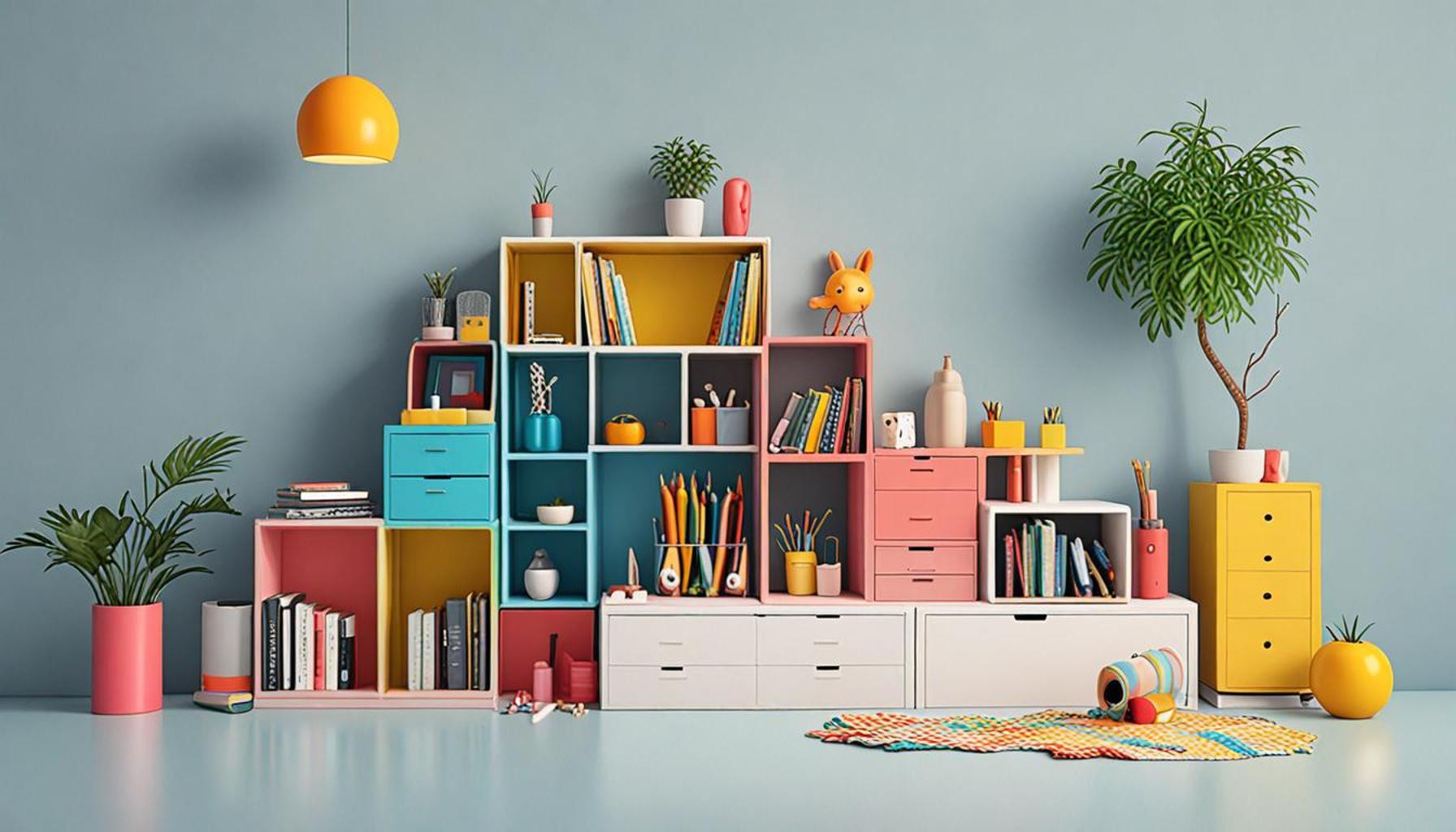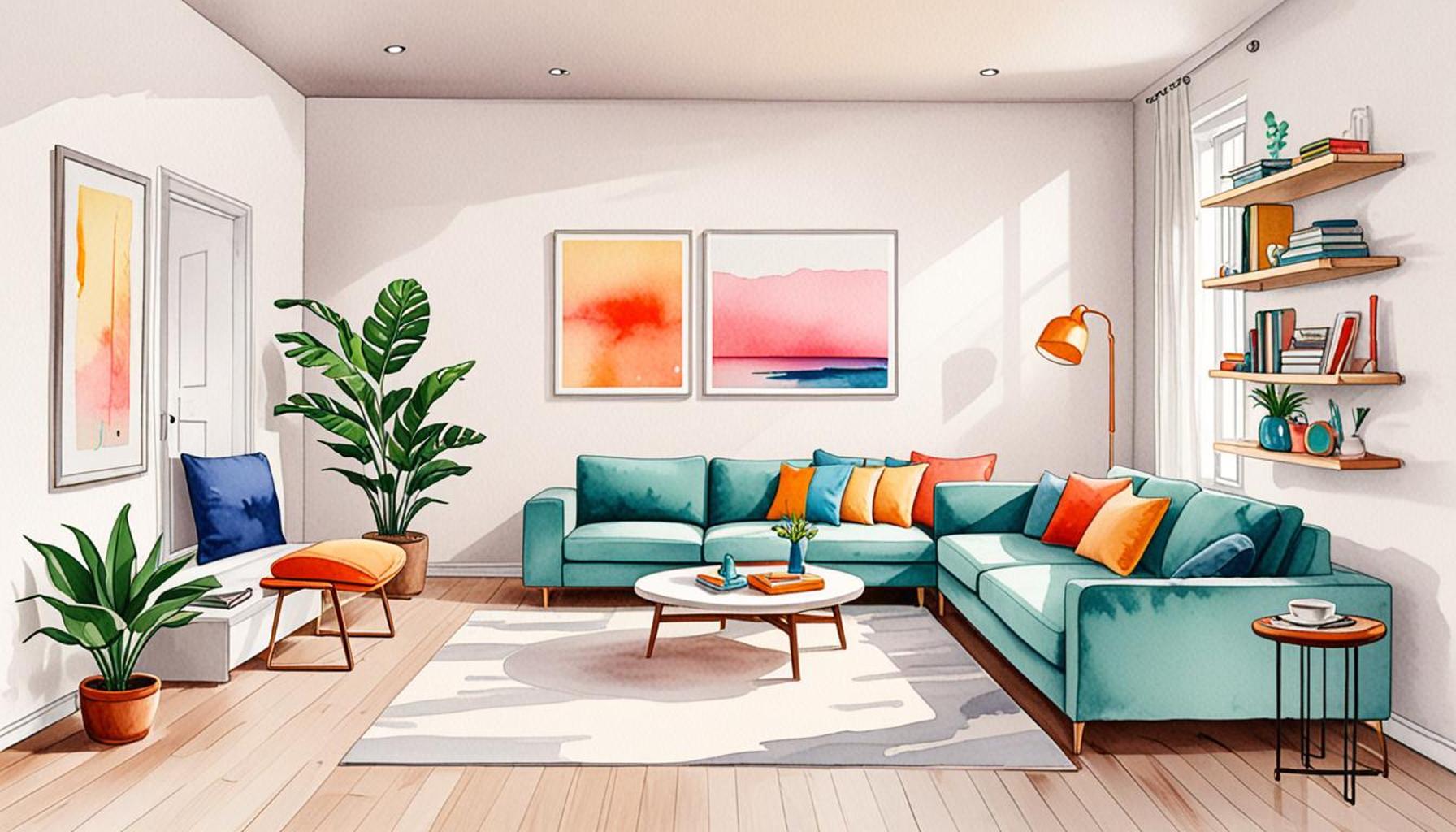Space Optimization Strategies for Minimalist Bedrooms: Creating a Calm Retreat

Creating a Calm Retreat
In an era where clutter often overwhelms, the idea of a minimalist bedroom offers a refreshing escape. By embracing space optimization strategies, homeowners can turn their bedrooms into serene havens that promote relaxation and rejuvenation.
Minimalism is not merely about reducing items; it’s about crafting an environment that enhances mental clarity and tranquility. Key aspects to consider include:
- Functional furniture: Look for multi-purpose pieces that serve dual roles, such as beds with built-in storage. For instance, consider a platform bed with drawers underneath, allowing you to keep extra linens, shoes, or seasonal clothing neatly tucked away. This not only saves space but also keeps the bedroom visually appealing.
- Decluttering techniques: Regularly assess belongings and eliminate excess items that don’t spark joy. One effective method is the “One In, One Out” rule, meaning every time you acquire a new item, you remove another. This can prevent the gradual accumulation of unnecessary items. Additionally, utilizing organizers—like small storage boxes or baskets—can help manage smaller items while maintaining a clean aesthetic.
- Color schemes: Utilize neutral tones that create a calming atmosphere and expand visual space. Shades like soft whites, gentle beiges, or muted grays have been shown to reduce stress levels. To create warmth, you might incorporate textiles like a large woven rug or throw pillows in Earthy tones. This approach maintains a sense of simplicity while fostering a cozy environment.
Research indicates that a tidy space contributes significantly to mental well-being. A study from the Princeton University Neuroscience Institute found that clutter can distract individuals and even reduce their productivity. By implementing these techniques, you not only optimize the room’s functionality but also enhance your personal sanctuary.
This article will delve into specific space optimization strategies that can transform your bedroom into a peaceful retreat. For instance, consider a room layout that promotes flow, such as positioning your bed away from the door to create a sense of security. Natural elements, like incorporating houseplants, can also enhance air quality and provide a sense of connection to nature, further promoting relaxation.
Join us as we explore design tactics that merge simplicity with style, ultimately guiding you to create your ideal oasis. By focusing on functional design and mindful organization, you can cultivate a bedroom that not only looks beautiful but also fosters a mindset of peace and rejuvenation.
DISCOVER MORE: Click here to dive deeper
Maximizing Functionality without Sacrificing Aesthetics
To create a minimalist bedroom that exudes calmness and functionality, it is essential to prioritize space optimization strategies that maximize every square inch of the room while maintaining a serene atmosphere. Start by choosing furniture that is not only stylish but also practical. Integrating dual-purpose items into your design can significantly enhance both the utility and aesthetics of your space.
Consider implementing the following strategies to optimize space effectively:
- Wall-Mounted Solutions: Utilize vertical space by installing wall-mounted shelves or bedside tables. This not only frees up floor space but also creates an illusion of height, making the room feel larger and more open. Floating shelves can display decorative items or books, adding personality while keeping surfaces clutter-free.
- Under-Bed Storage: Many forget about the space lurking beneath the bed. Use this area wisely by incorporating storage bins or drawers designed specifically for under-bed placement. This hidden storage can house seasonal clothing, extra bedding, or even shoes, ensuring the room remains tidy and organized.
- Foldable Furniture: Incorporate foldable items, such as a wall-mounted desk or a fold-out chair. These pieces can be easily stowed away when not in use, allowing for a free-flowing environment. Transforming your bedroom into a multi-functional space can help cater to various needs without overwhelming the area with excess furniture.
The arrangement of furniture is also crucial when aiming for that calm retreat feel. According to Feng Shui principles, positioning the bed in a commanding position allows for greater relaxation. Place the bed against a solid wall but away from the door to create a sense of safety and control. This arrangement not only improves flow but also encourages restful sleep.
Natural lighting plays a vital role in the perception of space and overall mood within a room. Whenever possible, let in light through sheer curtains or blinds that can be easily opened. Natural light can minimize feelings of confinement often associated with smaller bedrooms. Furthermore, strategically placing mirrors can reflect light and enhance the feeling of spaciousness.
Integrating decorative elements that provide both visual interest and a sense of peace is also important. Minimalist designs thrive on simplicity and intentional choices. Select a few art pieces or photographs that resonate with you—just enough to stimulate without overwhelming. Natural materials, like bamboo or wood, add warmth and texture without contributing to visual clutter.
Utilizing these space optimization strategies can transform a compact bedroom into a tranquil haven. By embracing multifunctionality and thoughtful design, each aspect of the room can contribute to creating a peaceful retreat that ultimately enhances your quality of life.
Innovative Space Solutions for Minimalist Bedrooms
When embracing a minimalist style, especially for a calm retreat, the right space optimization strategies can make all the difference. This approach not only maximizes functionality but also enhances the overall ambiance, creating a serene environment that promotes relaxation.
Multifunctional Furniture
Incorporating multifunctional furniture is an excellent strategy to save space. Consider items like a bed with built-in storage underneath or a coffee table that transforms into a desk. Such designs help you to minimize clutter while offering practical solutions for everyday needs. This not only streamlines your living space but encourages a peaceful mind.
Vertical Space Utilization
Utilizing vertical space is another key strategy. Installing shelves above furniture, hanging plants, or using wall-mounted lamps can free up valuable floor space. By getting creative with vertical storage, you can enhance the room’s aesthetic while maintaining an open feel that contributes to the calming atmosphere of a minimalist bedroom. Every inch counts in achieving that coveted calm retreat vibe.
| Category | Key Features |
|---|---|
| Multifunctional Furniture | Saves space and reduces clutter |
| Vertical Space Utilization | Enhances room aesthetics, creates an open feel |
Decluttering Techniques
Another essential aspect of minimalist bedrooms is effective decluttering techniques. Adopting the “one in, one out” rule can significantly help. For every new item introduced into your space, consider removing an existing one. This practice encourages intentionality in your design choices and ensures that each piece contributes to the calming atmosphere you desire.
Neutral Color Palettes
Creating a neutral color palette for your bedroom can further enhance tranquility. Soft whites, beiges, and earthy tones promote relaxation and can make the space feel larger and more inviting. Accentuating these colors with strategic pops of color in accessories can also maintain interest without overwhelming the senses.
DISCOVER MORE: Click here to delve deeper
Creating a Harmonious Atmosphere with Color and Textiles
Color and textiles play a significant role in enhancing the peaceful ambiance of a minimalist bedroom. By strategically selecting hues and materials, you can create an inviting space that optimizes visual flow and promotes relaxation. The right color palette can inspire tranquility, while textiles can add a touch of warmth and comfort without overwhelming the senses.
When choosing colors for a minimalist bedroom, consider a neutral color palette as a foundation. Soft whites, cool grays, and gentle beiges provide a serene backdrop that creates a spacious feel. These muted tones reflect light effectively, making the room feel brighter and more airy. As an accent, consider incorporating calming shades like soft greens or blues, which are often associated with nature and can evoke feelings of calmness. Accent walls in these tranquil colors can serve as focal points without overpowering the overall design.
In addition to color, the choice of textiles is vital in maintaining a minimalist aesthetic. Opt for natural fabrics like cotton, linen, or wool, which breathe well and provide a comforting texture. Layering different textiles can subtly enhance depth without cluttering the visual space. A plush area rug can ground the room while adding coziness underfoot, and a simple quilt or duvet cover can introduce a splash of color or pattern without overwhelming the senses. Using fewer, higher-quality pieces is key in a minimalist design; this philosophy helps maintain simplicity while enhancing the space’s overall charm.
Lighting is another crucial element in creating a calm retreat. Aim for a combination of ambient, task, and accent lighting to ensure versatility. Soft, warm lighting from sources such as pendant lamps or wall sconces can enhance the serene atmosphere. Consider installing dimmer switches to allow for flexible lighting options, creating the perfect ambiance for both relaxation and productivity. Incorporating smart lighting systems can also allow for control over brightness and hue, catering to specific moods throughout the day.
Additionally, the placement of decorative accessories within your minimalist bedroom should be purposeful and deliberate. Consider utilizing a curated display of personal items. For instance, a well-placed piece of art or a plant can add character without detracting from the overall minimalism. Instead of clustering multiple decorations, limit yourself to one or two anchor pieces that tell a story or evoke a memory. This will keep the room feeling intentional and free from unnecessary visual clutter.
Integrating greenery into your minimalist bedroom serves multiple purposes; plants not only improve air quality but also promote a sense of calm and connection to nature. Consider low-maintenance options such as succulents or snake plants, which require minimal care and can thrive in various lighting conditions, making them ideal for cozy bedrooms. Positioning plants on shelves or in hanging planters can further optimize space while enhancing the overall aesthetic.
Each of these strategies contributes to crafting a minimalist bedroom that celebrates simplicity while maximizing comfort. By thoughtfully incorporating elements of color, textiles, lighting, and greenery, you can create a calming sanctuary that invites relaxation and rejuvenation in your daily life.
DISCOVER MORE: Click here to learn how to transform your workspace
Conclusion: Embracing Minimalism for a Serene Sanctuary
In the quest for a peaceful refuge, the space optimization strategies outlined for minimalist bedrooms reveal how essential design principles can transform cluttered environments into serene retreats. By prioritizing a neutral color palette, natural textiles, and purposeful lighting, you can forge a space that not only looks aesthetically pleasing but also promotes mental tranquility. The mixed textures and soft hues breathe life and calm into the room, allowing you to retreat into a haven of relaxation.
Moreover, integrating well-placed greenery not only enhances the visual appeal but also contributes to a holistic connection with nature, reminding us of the serene outdoors. As homeowners or renters seek sanctuaries free from the noise and chaos of everyday life, adopting minimalist principles can yield a profound impact on mental well-being. From choosing fewer, higher-quality items to creating curated displays of personal significance, each detail serves to enhance the room’s simplicity.
Ultimately, the key takeaway is to embrace the beauty of minimalism—focusing on quality over quantity and purpose over excess. This approach not only maximizes space but also helps clear the mind, fostering an environment where peace reigns supreme. As you embark on your minimalist journey, consider how these strategies can create a serene atmosphere that invites relaxation and rejuvenation, transforming your bedroom into a truly calming retreat.



